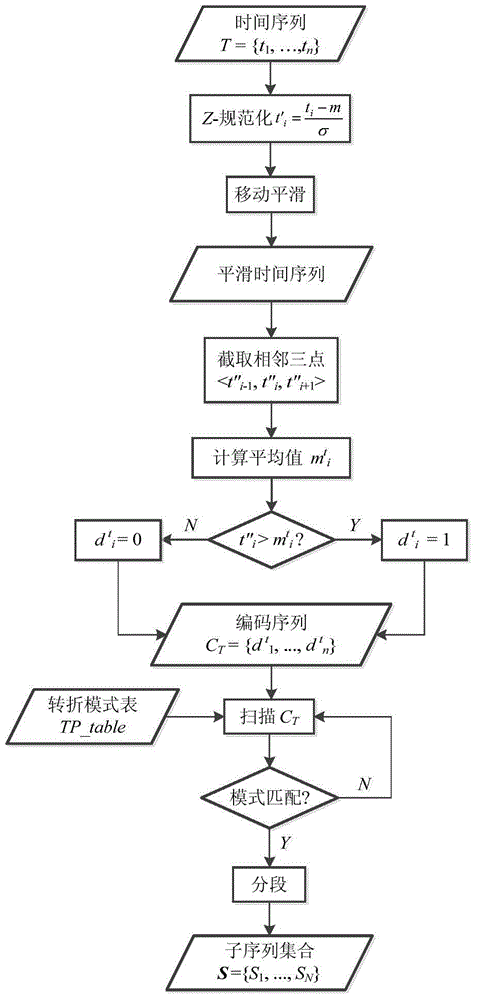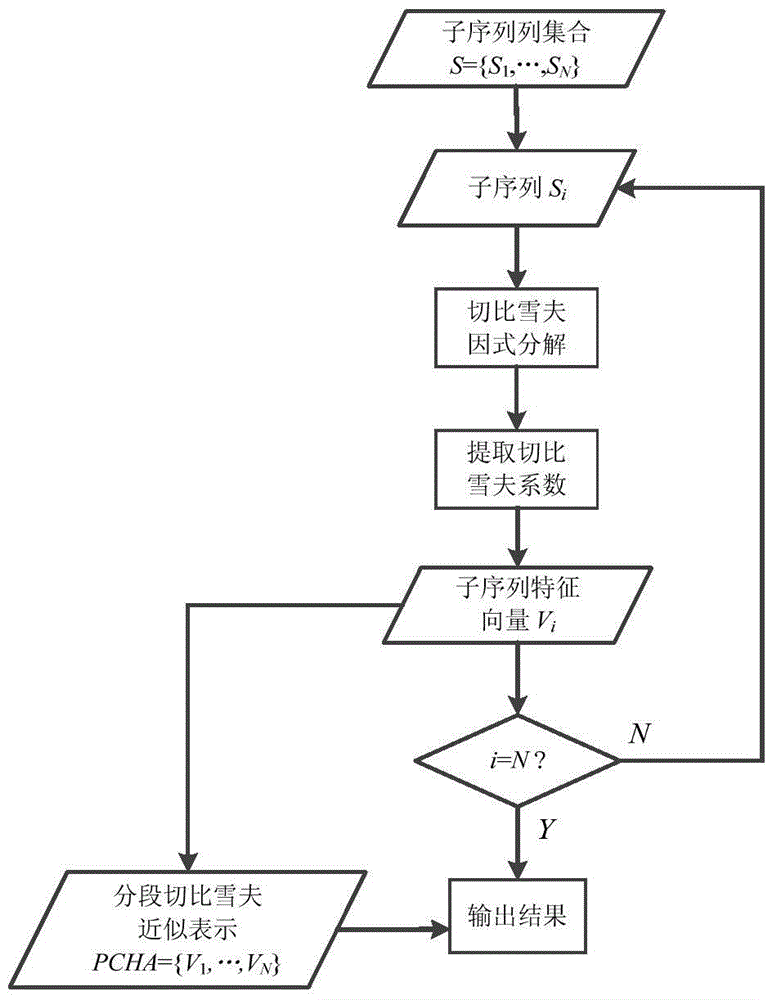Time series data nearest-neighbor classifying method based on subsection orthogonal polynomial decomposition
A technique of nearest neighbor classification and orthogonal polynomials, applied in character and pattern recognition, instruments, computer components, etc., can solve problems such as weak expression ability of time series fluctuation patterns, low scalability of data scale, high computational complexity, etc. , to achieve the effect of small fitting error, overcoming phase shift, and high global mode matching
- Summary
- Abstract
- Description
- Claims
- Application Information
AI Technical Summary
Problems solved by technology
Method used
Image
Examples
Embodiment Construction
[0038] The present invention will be described in further detail below in conjunction with the accompanying drawings.
[0039] like figure 1 As shown, the present invention is based on the time series data nearest neighbor classification method of segmented orthogonal polynomial decomposition, comprising the following steps:
[0040] (1) Adaptive segmentation, such as figure 2 As shown, it specifically includes the following sub-steps:
[0041] (1.1) Read each time series T={t in the database in turn 1 ,t 2 ,...,t i ,...,t n};
[0042] (1.2) Calculate the average value m and standard deviation σ of the sampling points of T, and perform Z-normalization processing on T according to the formula (1), and obtain the normalized time series T'={t' 1 ,t' 2 ,...,t' i ,...,t' n};
[0043] t ′ i = t i - m ...
PUM
 Login to View More
Login to View More Abstract
Description
Claims
Application Information
 Login to View More
Login to View More - R&D
- Intellectual Property
- Life Sciences
- Materials
- Tech Scout
- Unparalleled Data Quality
- Higher Quality Content
- 60% Fewer Hallucinations
Browse by: Latest US Patents, China's latest patents, Technical Efficacy Thesaurus, Application Domain, Technology Topic, Popular Technical Reports.
© 2025 PatSnap. All rights reserved.Legal|Privacy policy|Modern Slavery Act Transparency Statement|Sitemap|About US| Contact US: help@patsnap.com



